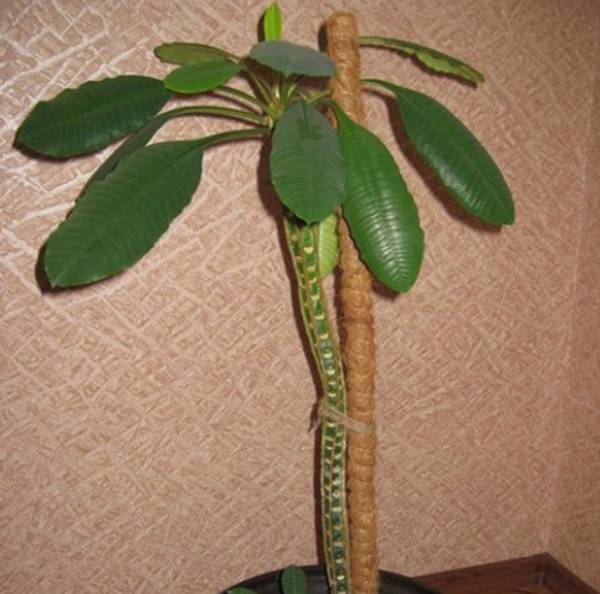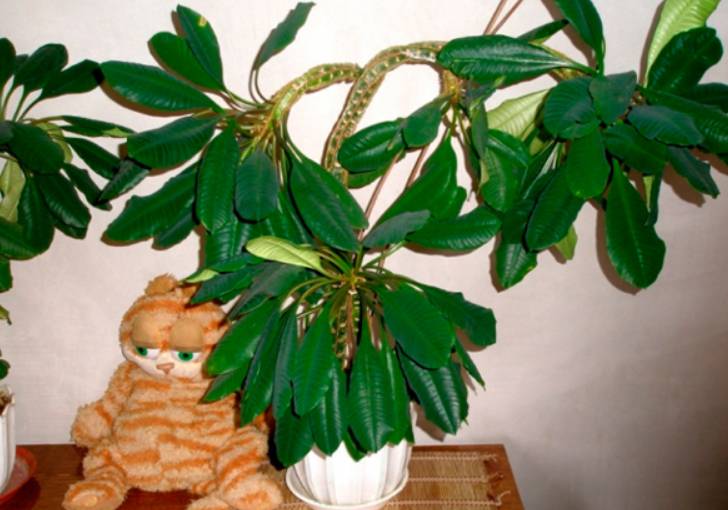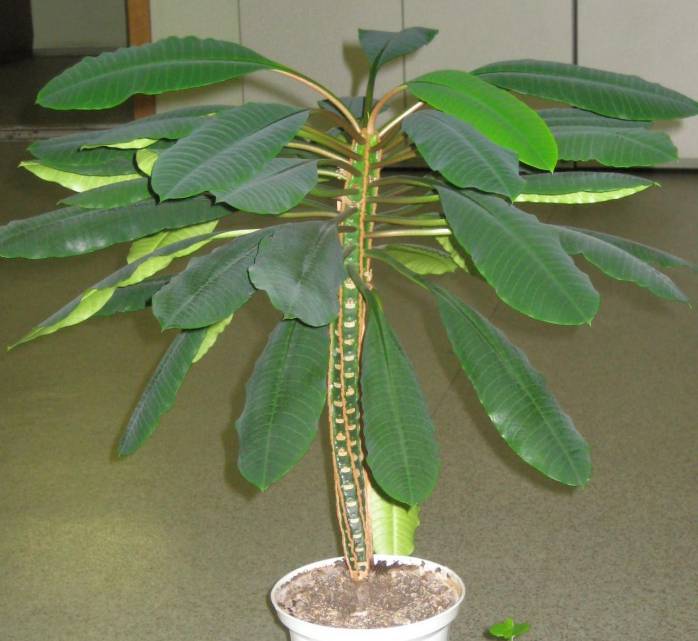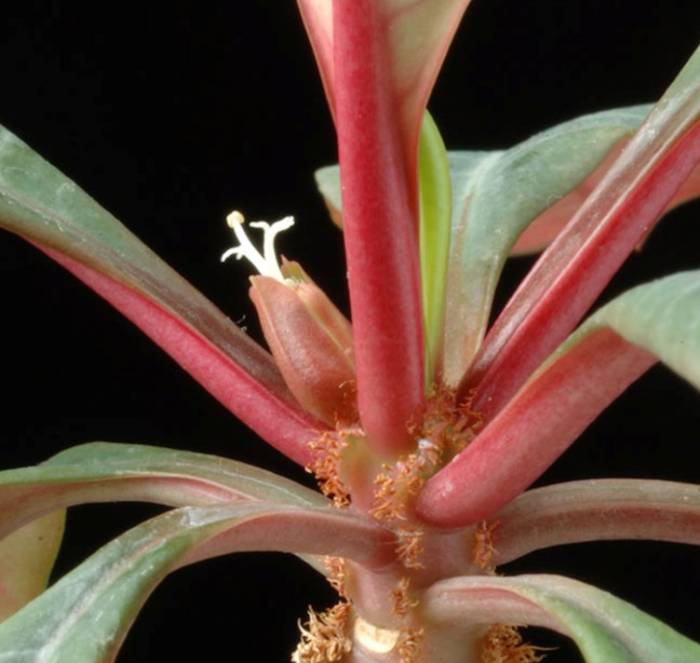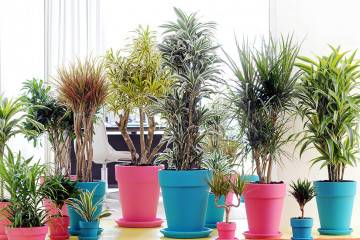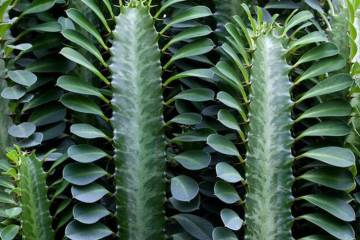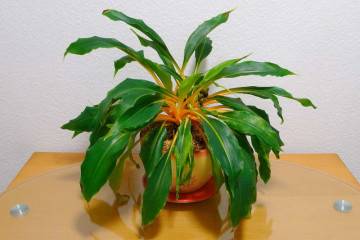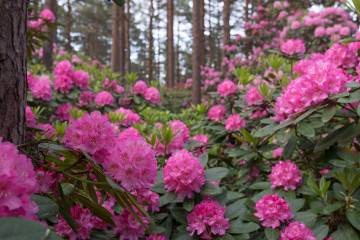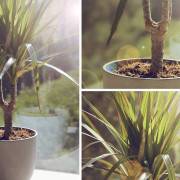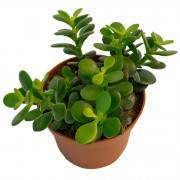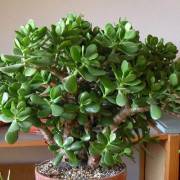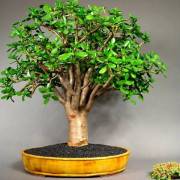Euphorbia White-tipped - description and care of the house
Content:
There are species among indoor plants that are said to be able to bring harmony, well-being, prosperity to the house. These flowers include the popular money tree (bastard) and white-tipped euphorbia (Euphorbia leuconeura), which housewives at first called cactus, palm. This plant became fashionable not so long ago. Our grandmothers loved ficuses, but they did not know about palm trees. But now the euphorbia, which received the popular name "dollar tree", is kept near the entrance to the house in the hope that luck will not pass by the door.
What does the euphorbia look like, which family does it belong to?
No wonder the spurge is compared to a cactus. In fact, it is a succulent - a succulent plant that accumulates liquid in its tissues. The classifiers have placed the genus Euphorbia leuconeura in the euphorbia family. The name is due to the fact that the viscous sap contained in plants belonging to this family is white and resembles milk.
The milkweed has a ribbed leathery stem, thickening towards the top, covered with scales. It resembles the trunk of a palm tree with a thin woody base. At the top are elongated leaves narrowed to the stalks with silvery-white oval veins. As the stem grows, the leaves may fall off. Some species of milkweed of this genus branch. The root of the plant is powerful, spreading, located in the upper layer of the soil.
Healing properties
As an indoor flower, Euphorbia leuconeura has become popular since the end of the 20th century. The plant got its scientific name "euphorbia" thanks to the doctor Euphorb, who lived in the 1st century BC. e. He used milkweed juice to heal the king of Mauritania, whom he served, and at the same time rid him of his enemies. After all, the juice of a plant is poisonous, if you handle it carelessly, a person can be poisoned. But if you use healing doses of juice, then it will be beneficial: with its help you can get rid of parasites, heal wounds, insect bites, and remove puffiness.
Common types of indoor milkweed
The Euphorbia family includes huge trees growing in tropical forests, herbaceous plants from temperate latitudes, thorny shrubs and low-growing trees living in deserts. Indoor species of the genus Euphorbia are hybrids and varieties that differ in the shape and color of stems, leaves, and ways of caring for them.
At home they grow:
- Euphorbia bupleurifolia (Bupleurumolistny) is a shrub with tuberous stems, up to 20 cm high. The tubercles are arranged in a spiral, forming a thickened spherical stem.
- Euphorbia canariensis (Canary) - in nature it can reach 12 m in height, its ribbed stems are dotted with brown spines, feels good on a well-lit windowsill.
- Euphorbia caput medusae (Head of Mmedusa) - planted in hanging pots to create the effect of hanging tentacle branches.
- Euphorbia echinus (Thorn) - has long spines, erect stem with blunt ribs, grows in diffused light.
Growing and caring for a flower at home
In indoor conditions, the white-veined euphorbia feels very comfortable. Florists know that the plant behaves differently in warm and cold periods of the year, and adapt to it. But at the same time, caring for white-veined milkweed at home does not require special knowledge.
All actions of florists are as follows:
- With the onset of spring in the room where the flower grows, the temperature is maintained at 20-24 ° C. At this time, succulents need a lot of light. Therefore, the pot with the plant is moved closer to the windows or placed on the balcony, open veranda, but protected from direct sunlight on the leaves.
- Summer watering is abundant, but rare. The next watering is carried out after the root area of the soil has dried. Waterlogging of the soil will lead to the fact that the roots will begin to rot, turn yellow, and then the leaves will fall off.
- In the heat, the stems and leaves are sprayed. If there is a possibility and this does not affect the well-being of the household, they artificially maintain high humidity. To do this, an open container with water poured into it is placed next to the flower.
Features of care in winter, during the rest period
With the onset of short light days for euphorbia, a period of rest begins. At this time, in a room with a flower, it is necessary to reduce the air temperature to 12-16 ° C, provide artificial lighting - the total length of daylight hours should be at least 10 hours. Watering is carried out superficial and rare. Top dressing during this period is not needed for the flower. If conditions are not created for lengthening daylight hours, the flower will begin to shed its leaves.
Flowering white-veined milkweed
The inconspicuous flower of the white-necked milkweed is not of interest to lovers of the lush flowering of indoor plants. All its beauty lies in the green crown and graceful stem. But the flowering period of Euphorbia leuconeura is quite long. Budding peaks in mid-summer. The first buds appear in mid-March, flowering ends in August. The inflorescences are collected in cones and consist of filamentous inconspicuous flowers. They grow from the axils of the leaves and are covered with them.
Pruning
If you do not prune tall trunks and long stems of milkweed, the bush will begin to deform. The center barrel will bend and break. Shorten the stems and trunk after the plants have faded.
During work, safety precautions must be observed. To cut the spurge, you first need to put on a protective plastic mask and glasses on your face, gloves on your hands. It must not be forgotten that the species Euphorbia leuconeura has a poisonous sap that can splash on the skin and eyes.
After the incision, a white, viscous mass will begin to seep from the damaged area. It is necessary to take paper napkins and blot the milk, remove the napkins out of the reach of children and animals. Then rinse the wound with running water.
After the juice stops appearing, the cut site is powdered with dry sifted ash or activated carbon powder. The flower continues to be looked after in the same way as before pruning.
How euphorbia multiplies
Among flower growers, there is an opinion that it will be easy to propagate euphorbia white-veined if you can collect seeds in time. Although the flowers of the succulent are rather inconspicuous, they self-pollinate very well, set fruits in the form of bolls. Testes open after ripening.The process takes place under pressure from the inside, so small light seeds are scattered in all directions.
Germinating seeds
Sometimes the germination of milkweed seeds occurs without human intervention. Seeds scattered by the plant around the room may fall on suitable soil in another flower pot. With the next watering, the seeds go deeper into the ground and germinate imperceptibly for the grower. This is not always convenient, but it indicates that no special conditions need to be created for the germination of euphorbia seeds.
The collected seeds, without deepening, are sown in separate, pre-prepared boxes with moistened soil mixture. A substrate is used for succulents and cacti, or a mixture of peat, leafy earth, river sand is prepared. Drainage materials are placed at the bottom. Holes must be made in the landing boxes to drain the water.
Before sprouting, the soil is regularly moistened with spray guns. After the appearance of 2-3 true leaves, the seedlings are transplanted into separate pots.
Rooting cuttings
Pieces of trunk or stems formed after pruning of plants are suitable for cuttings. They are not immediately placed in the ground. It is necessary to wait 2 days for the juice to stop secreting. After that, the cuttings are treated with a rooting stimulator and placed in moist, loose soil. Around the bottom of the stem, the soil is compacted. The substrate must be pre-calcined in the oven to destroy all pathogens.
Cuttings will root well if mini-greenhouse conditions are created for them. To do this, a transparent cap made of a plastic bag or transparent suitable dishes is put on a pot with cuttings. Carry out regular moistening of the earth around the cuttings and airing.
The pots are placed in a well-lit place, but do not allow direct sunlight to enter. The air should be warmed up to t 22-25 ° С, humidity not higher than 60%. When the first signs of rooting appear, the cap is removed from the seedlings.
Transfer
The upper thick part of the milkweed's trunk is covered with a thin skin, the lower part is much thinner, but the skin on it is much thicker, reminiscent of the skin of a tree. In young plants, when there is a lack of light, the lower part of the trunk can stretch out strongly and bend or break in this place. In this case, they must be transplanted into another pot and at the same time deepen the trunk to the place of thickening.
An adult euphorbia is transplanted when its roots take up the entire pot. This is determined during watering: from a pot completely filled with roots, water will immediately leave through the drainage holes. This means that there is no place left in the earthen coma where water would be absorbed. In this case, the ends of the roots begin to crawl out of the drainage holes. The new pot should have more space than the old one. It is calculated that the next transplant will have to be done in 3-4 years.
Diseases and pests of milkweed
Pale, yellowed euphorbia leaves do not always indicate the appearance of pests or some kind of rot on the plant. Most often this is a sign of improper care - lack of moisture or too frequent and abundant watering, lack of nutrients, excess sun and low humidity. Top dressing and an adjusted irrigation schedule will change the situation and restore the foliage of the plant.
Reasons that may cause problems when growing milkweed:
- Drops buds and leaves - this happens when there is a lack of phosphorus, you need 1 tsp. Dilute superphosphate in 1 liter of water and irrigate twice with an interval of 7-10 days.
- The leaves turn pale - this occurs when the earthen coma in the flower pot dries completely, it is required to check the condition of the soil.
- The tips of the leaves dry up - it means that the plant does not have enough moisture obtained from the air, too much bright sunlight.
- The lower leaves fall off - this process is natural, since usually old obsolete leaves fall off.
Diseases and pests
The sources of diseases and pests of milkweed growing at home are the dirty hands of the grower and non-sterile working tools.
The appearance on the leaves of dark or whitish spots, dots, traces of rot on the stems, leaf twisting indicate that plants can be infected with fungal and viral infections: powdery mildew, gray rot, bacteriosis, Alternaria, root and stem rot. Insect pests that most often settle on milkweed and are not afraid of its poisonous juice are spider mites, aphids, and scale insects.
To combat fungal, viral diseases and insect pests, special biological products are used that cannot have a harmful effect on people living next to house plants. It can be means in the form of sprays "Phytocid-r", in ampoules, in powders "Aktellik", "Fitosporin", "Fitoverm".
The white-veined euphorbia growing in an apartment or in a house is sometimes considered a talisman that can bring well-being to the house. But more often people need him in order to simply admire the plant, to be next to a green friend in cold weather, when you will not see a blade of grass or a leaf on the street.
Plants feel cared for, loved. After all, it's not for nothing that when, for some reason, a person's interest in a plant disappears, the plants wither and die. This should not be allowed. Let there always be living beings next to people, even if they do not know how to move and respond to a call, but capable of bringing comfort and peace to the house.
